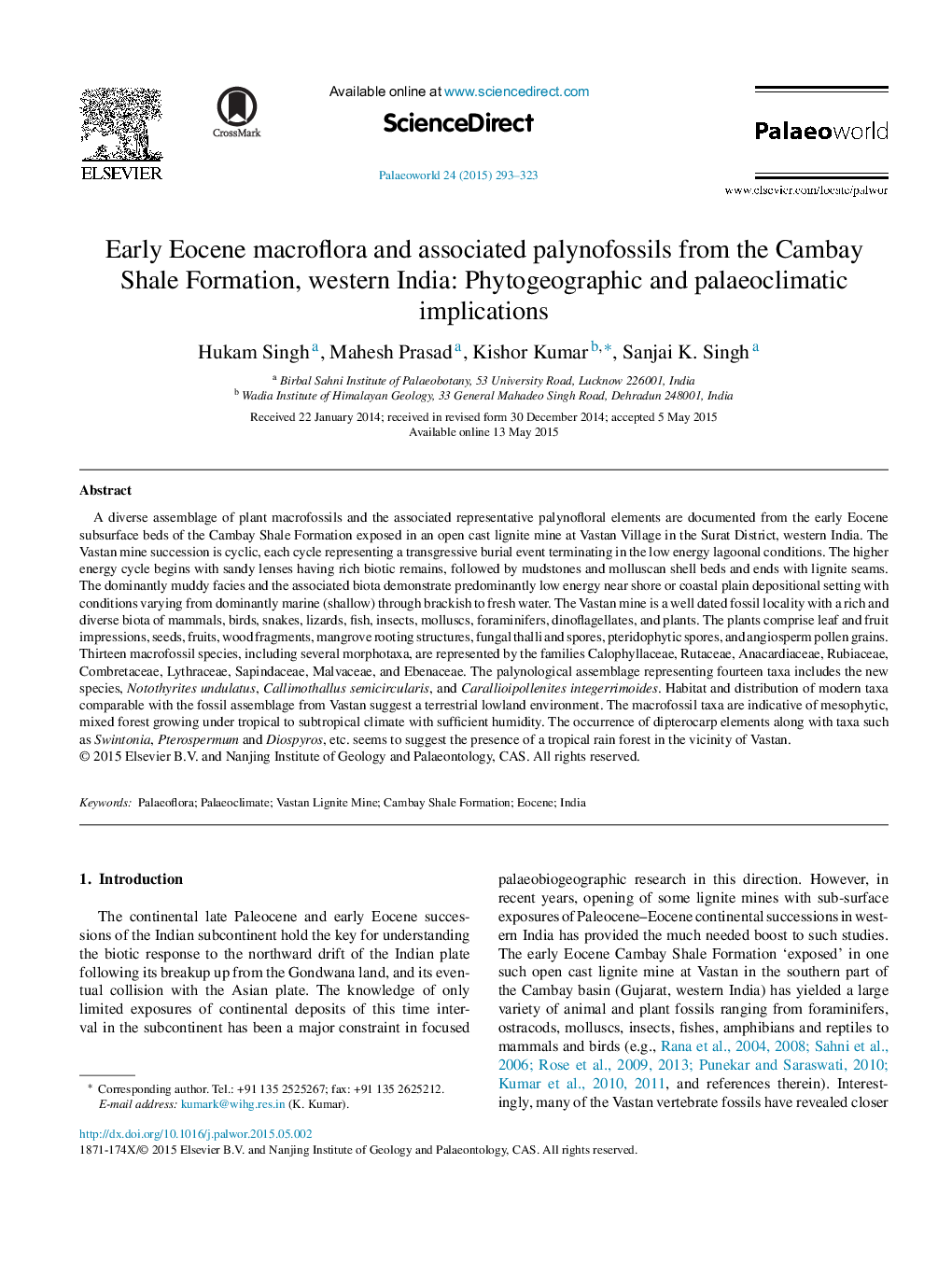| Article ID | Journal | Published Year | Pages | File Type |
|---|---|---|---|---|
| 4749608 | Palaeoworld | 2015 | 31 Pages |
A diverse assemblage of plant macrofossils and the associated representative palynofloral elements are documented from the early Eocene subsurface beds of the Cambay Shale Formation exposed in an open cast lignite mine at Vastan Village in the Surat District, western India. The Vastan mine succession is cyclic, each cycle representing a transgressive burial event terminating in the low energy lagoonal conditions. The higher energy cycle begins with sandy lenses having rich biotic remains, followed by mudstones and molluscan shell beds and ends with lignite seams. The dominantly muddy facies and the associated biota demonstrate predominantly low energy near shore or coastal plain depositional setting with conditions varying from dominantly marine (shallow) through brackish to fresh water. The Vastan mine is a well dated fossil locality with a rich and diverse biota of mammals, birds, snakes, lizards, fish, insects, molluscs, foraminifers, dinoflagellates, and plants. The plants comprise leaf and fruit impressions, seeds, fruits, wood fragments, mangrove rooting structures, fungal thalli and spores, pteridophytic spores, and angiosperm pollen grains. Thirteen macrofossil species, including several morphotaxa, are represented by the families Calophyllaceae, Rutaceae, Anacardiaceae, Rubiaceae, Combretaceae, Lythraceae, Sapindaceae, Malvaceae, and Ebenaceae. The palynological assemblage representing fourteen taxa includes the new species, Notothyrites undulatus, Callimothallus semicircularis, and Carallioipollenites integerrimoides. Habitat and distribution of modern taxa comparable with the fossil assemblage from Vastan suggest a terrestrial lowland environment. The macrofossil taxa are indicative of mesophytic, mixed forest growing under tropical to subtropical climate with sufficient humidity. The occurrence of dipterocarp elements along with taxa such as Swintonia, Pterospermum and Diospyros, etc. seems to suggest the presence of a tropical rain forest in the vicinity of Vastan.
